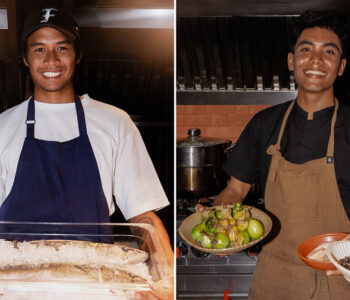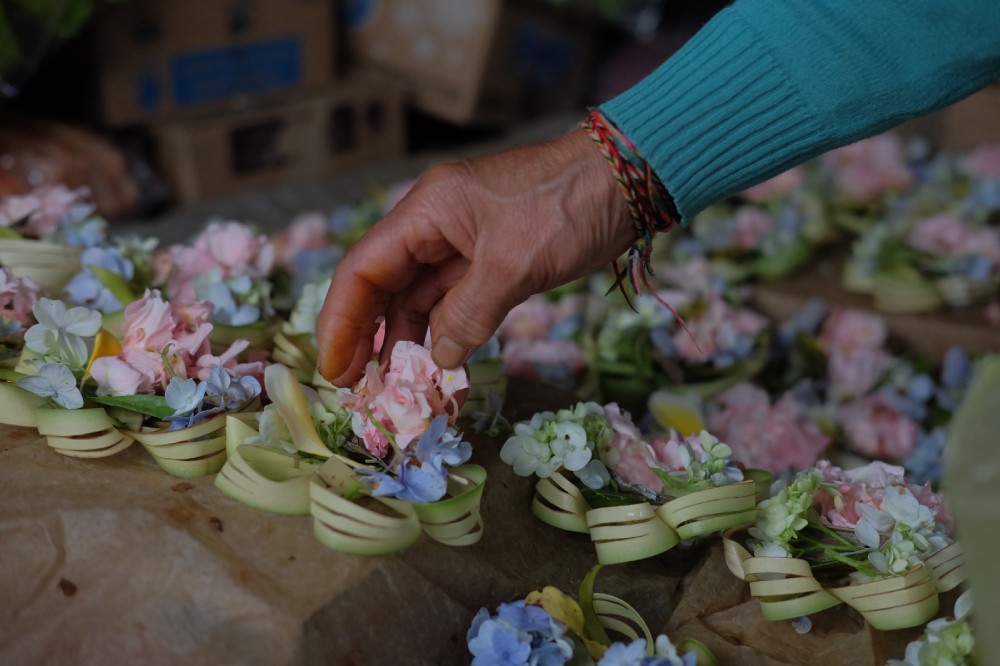
Note: There are images of slaughtered animals and a pig over a fire, if this kind of subject matter upsets you, please be aware.
It starts suddenly in the middle of the night, while people are sound asleep. It sounds like the wailing of a milk-lusting baby. But the wailing soon dies out into a whine of despair and a last shriek of death. And, as the first light of dawn is rising on the horizon, other similar squealling invades the silence of the night. These shrieks are not babies, but pigs, all killed, all over the island, at the same time, on the “day of slaughter” or penampahan, the day preceding the Galungan festival.
On this day the three Kala Tiga (3 negative demons) are said to come down to the middle world. Hence their threatening presence has to be exorcised. Only then will the ancestors be invited to come down on the following Wednesday-kliwon, known as Galungan in the Balinese calendar. They will stay there for ten days as “visitors” in family temples, until the Kuningan festival.
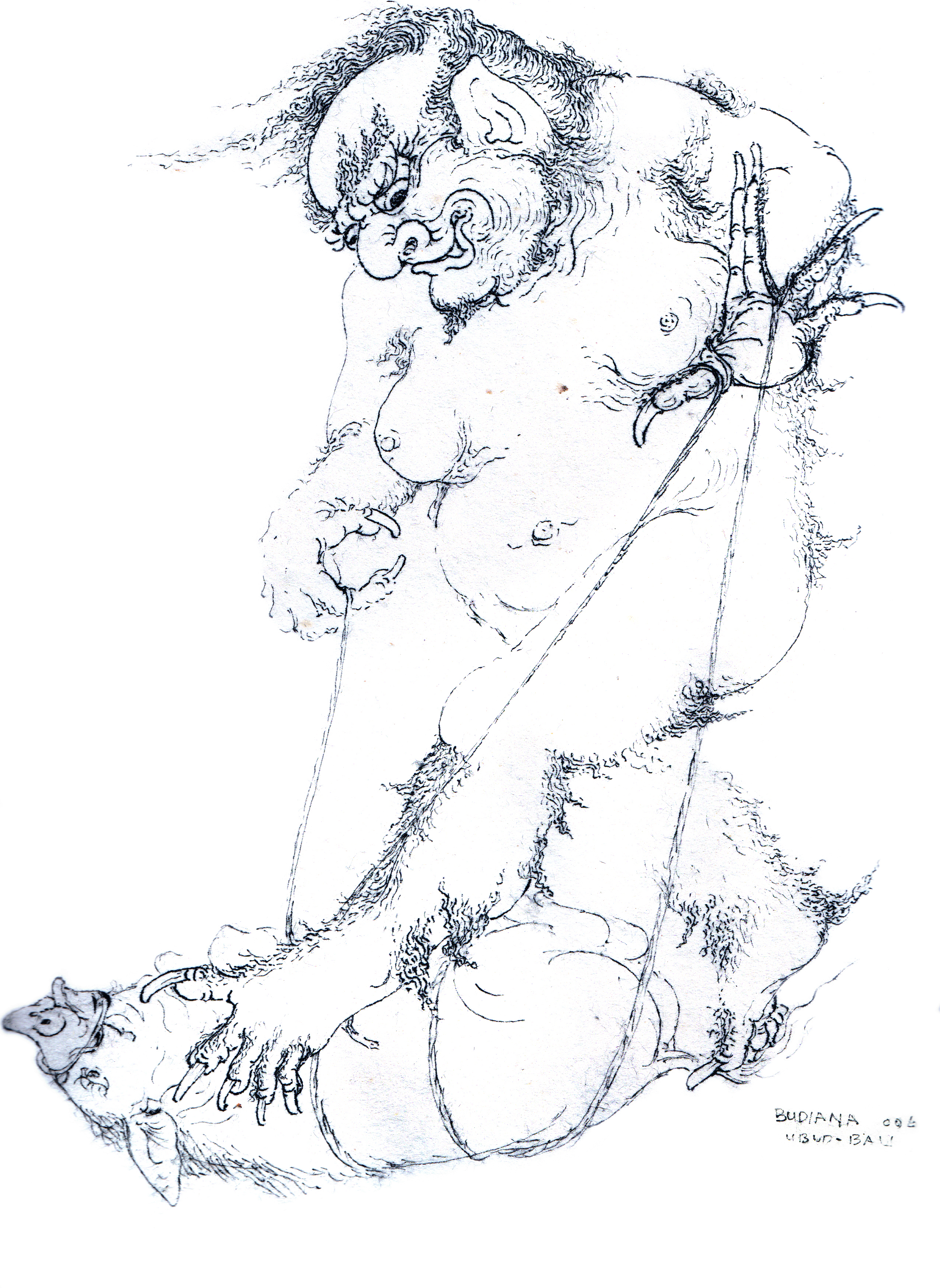
Pigs are also slaughtered for a broad range of other events such as odalan (temple festivals), otonan (anniversaries of newborn babies), but it is always in an exorcising (caru) function of some importance. For ordinary exorcism, chickens or ducks may suffice. One may not sacrifice cows for a ceremony such as penampahan, which is addressed to forces of the lower world.
Pork is one of Bali’s favorite foods, and while it makes the Moslem nauseous, it has the Balinese salivating. This does not mean every Balinese may eat pork, though. Many holders of religious functions, such as the temple priests mangku and pedanda, as well as the Barong and Rangda dancers, and the native mediums, do not eat pork and are entertained with so-called “Moslem” food (ajengan Selam) instead of traditional “heathen” food (ajengan kafir). Eating pork would besmirch them.
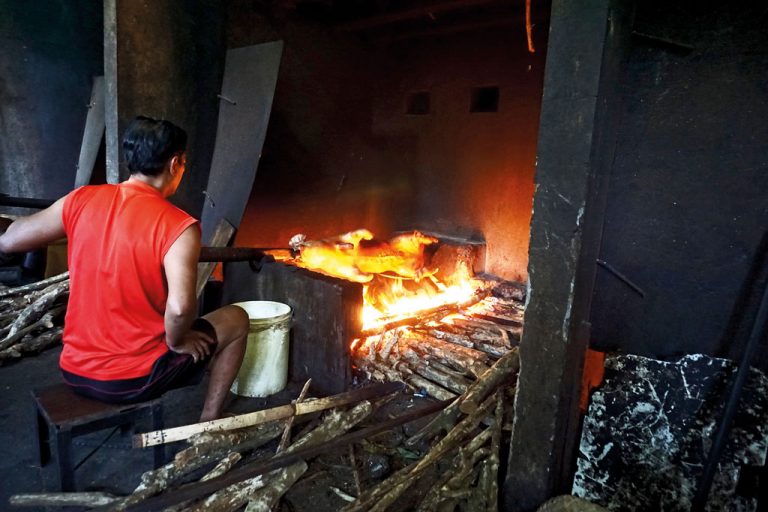
Yet, almost all-Balinese villagers raise pigs, which in some villages may be seen roaming freely around the streets in search of food, their big bellies touching the ground. Their favourite place used to be the teba, or back open yard in the back of the house, where they fed themselves on trash and human refuse. Today, most of them are kept into dens. They are not as “racially” pure as they used to be though, since red-skinned Western saddleback pigs have for the last thirty years been invited to freely copulate with chosen Balinese partners. (It must be noted that racially mixed copulation of pigs is considered more proper than its equivalent among humans). Yet, the Balinese do not seem to appreciate as much the meat they obtain from those “mixed couples”.
Not all the Balinese have pigs that are big enough – 100 kg and 4 to 9 months old – to be slaughtered on Penampahan. This is why upon arrival of ceremonies or festivals they set up special associations (seka mepatung) through which they organize the purchase, slaughter and sharing of the meat between their members. The groups set up before Galungan and Kuningan may slaughter up to five or 6 pigs each. These seka mepatung function on trust, never using scales to measure the lots of the meat.
If animal rights activists were not waking up too late to attend the slaughter of pigs, they would certainly protest the way in which these animals are handled and slaughtered. They are rounded up on the eve of Penampahan and put in specially made basket-cages, or tumpung, where they have no room to move. This makes them much easier to be transported. With luck, a few days ahead of Penampahan Galungan, you may see trucks with tens of these baskets full of squealing pigs in their back.
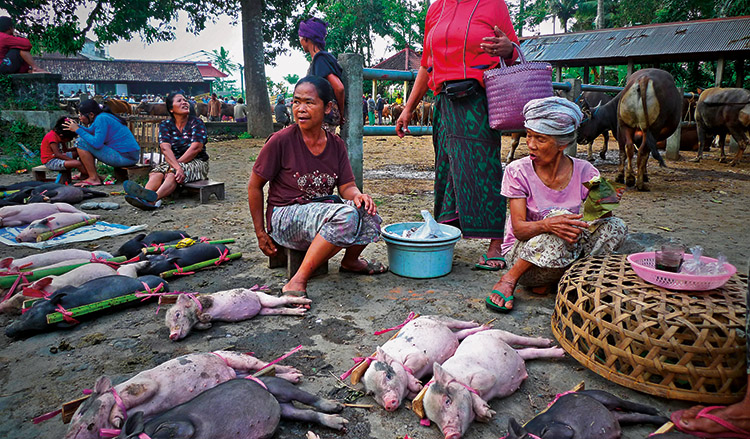
On the evening before Penampahan, when the sun is setting, small segehan offerings are presented to cleanse the house where the butcher is going to officiate. The killing proper takes place between two and four in the morning. The pigs are taken one by one out of the baskets, and, while four men immobilize the animal by stretching its legs wide open, a fifth approaches its and slashes its jugular open with a sharpened knife. It is when the squealing is at its most pathetic, before it comes down in the last throes of death. Before blood spurts, the “butcher” dips his finger into the open wood, to wipe it in the middle of its forefront. Blood is not let to flow into the ground; it is instead collected in an earthen recipient to be used later for the preparation of the “red” lawar, a favorite Balinese dish.
After the pig has met its painful death, hot water is splashed on the skin to smoothen it and make it easier to shave off its hair, using a chunk of coconut. The belly of the animal is then cut open and the bowels removed. Then is it empaled on a piece of wood, from the mouth down to the anus. After thorough washing, it is stuffed with ingredients and leaves. When this is done, the belly is sewn back again in such a way as to have the pig in the sitting position. Only then can it be roasted over a simple hole with two poles for the turning of the roasting beast.
Dried coconuts are used as firewood. After one and a half hours, the meat is already half-cooked, and it is sprinkled with coconut oil mixed with kunyir (tumeric). This is what gives the skin its shiny look. Full cooking takes between two and a half and three hours of roasting. One knows it by the sizzling sound of the skin. The result is impressive. While the Balinese can be seen licking their lips at the view of the impaled animal, other Indonesians may see in it a vision of hell. It is, like many things, a matter of perception. One thing is sure though: Babi Guling is a genuine Balinese delicacy.
It’s fair to say though, those without without the stomach to handle it are best to avoid the bloody sights of Penampahan Galungan.



